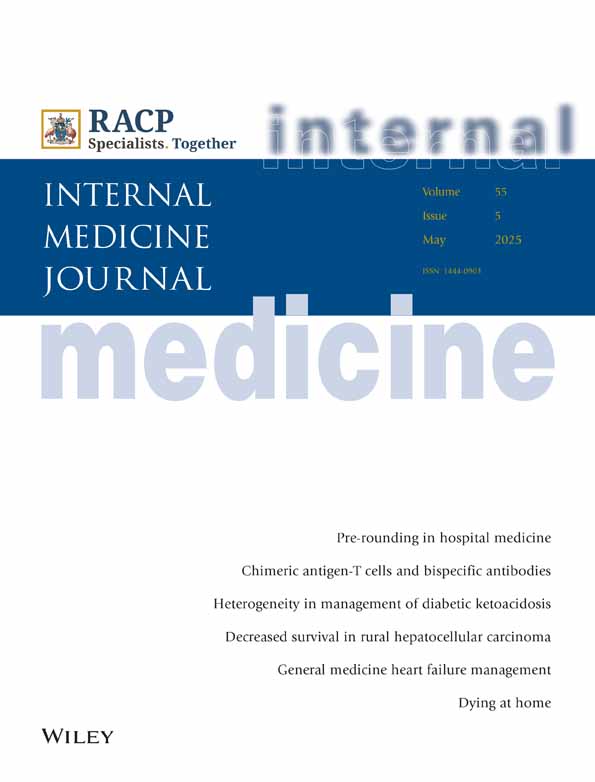Impact of a multidisciplinary team model on discharge efficiency and accuracy in internal medicine resident teams
Funding: None.
Conflict of interest: None.
ABSTRACT
Background
Efficient discharge planning is crucial for improving hospital capacity and patient care. Multidisciplinary rounds (MDRs) have been shown to enhance communication and coordination, yet their impact on resident teaching teams’ discharge efficiency is less studied.
Aims
To examine how embedding dedicated case managers (CMs) and social workers (SWs) into internal medicine (IM) resident teams impacts discharge efficiency.
Methods
We conducted a retrospective cross-sectional study at The Queen's Medical Center comparing two resident multidisciplinary teaching (MDT) teams that included dedicated CMs and SWs with two resident standard care teams over an 8-month period (October 18 2023–June 25 2024). The outcomes assessed included length of stay (LOS), expected discharge date (EDD) accuracy, readmission rates and the rate of conditional discharge orders placed.
Results
A total of 1944 patients were included. The MDT teams showed significantly improved EDD accuracy (72.0% vs 66.7%, P = 0.0120) and more frequently placed conditional discharge orders (61.7% vs 43.8%, P < 0.0001) compared to standard care teams. No significant difference was observed in LOS or readmission rates.
Conclusion
Embedding dedicated CMs and SWs within resident teams improved EDD accuracy and the rate of conditional discharge orders placed, suggesting an opportunity to integrate MDRs as a standard within IM residency training to enhance discharge planning efficiency.




